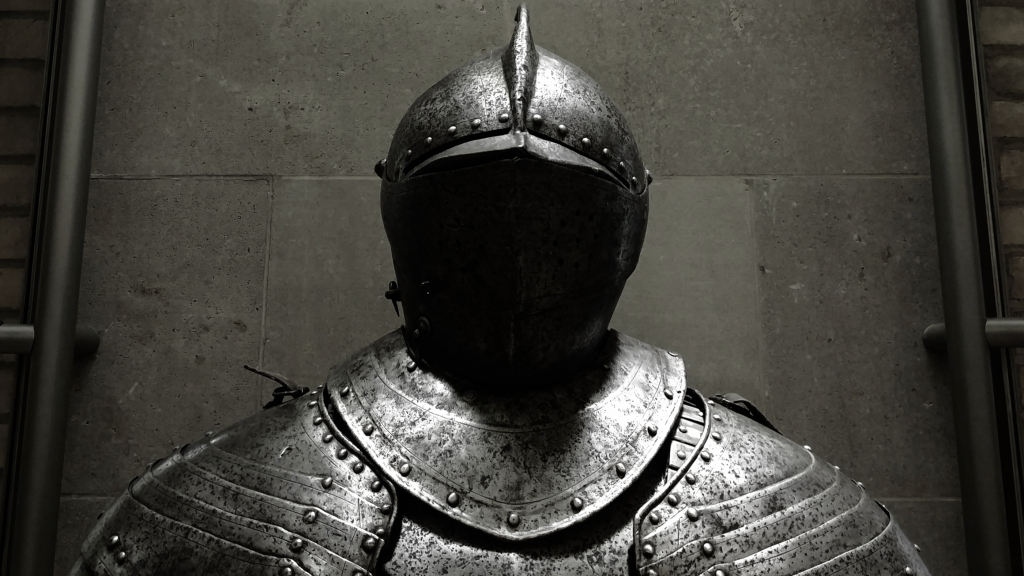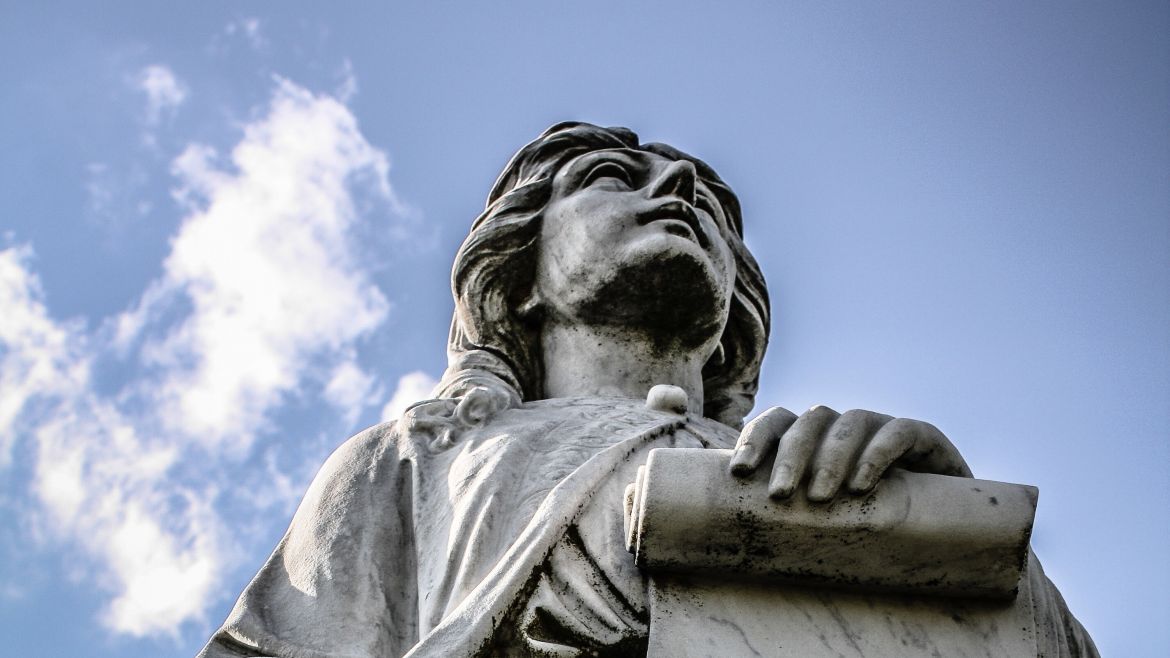Q&A: The little horn… Some teaching represents this as Antichrist yet to come from Europe. Rome? This can be debatable so I see the answer as neither true or false.
Judy B., London
[Judy is referring to the last question on the quiz for Lesson 4 of “Focus on Prophecy” course. It reads: T or F. This little horn represents the Roman Church which was in power for 1,260 years, from AD 538 to 1798.]
Thank you for your comment. We are happy when our students follow the courses and we are delighted when their opinion differs. Such a challenge (for both parties) should bring a better understanding, clarity and hopefully growth.
Lesson #4 of “Focus on Prophecy” deals with the contents of Daniel chapter 7 (lesson entitled “Curtain to the Future”). Before coming to the debatable section of Daniel 7, let’s set in stone the main thread of the chapter, the things beyond debate.
Along with the inquiring prophet, you and I get the interpretation of this vision not from a human teacher, but from a divine one. Thus, when Daniel asks about “the meaning of all this” (verse 16), he receives “the interpretation of these things”. Which reads as follows:
- “The four great beasts are four kings that will rise from the earth.” (Verse 17)
- “But the holy people of the Most High will receive the kingdom and will possess it forever—yes, for ever and ever.” (Verse 18).
That’s Daniel 7 in a nutshell. One can easily see a sequence of world empires, one conquering another, and a final stage while the last victors will be the people of God. The reader will identify two elements here, a political struggle (armies, wars, victories, kings and kingdoms) and also a religious controversy (since the ones mentioned as final conquerors are “holy people of the Most High”). This is very important to answering your question and we should not miss it. It looks like on the surface it is only a series of political wars, while in the background there is a great controversy between the forces of good and the forces of evil.

So, following the clear interpretation received from the heavenly tutor, along with Daniel we see that the four kingdoms/empires are: Babylon, Medo-Persia, Greece and Rome. (You may have noticed, as the lesson indicates, that here is the same structure as in Daniel 2. The symbols used there were metals, while here are beasts.)
The question we debate now is who is the little horn.
The lesson listed some 10 unique features of this symbol, all taken from Daniel 7. This little horn became the focus of Daniel’s inquiry, as mentioned in verses 11 or 20 and following. (We are in good company if we are bound to search for more.)
While some of the ten features can be applied more or less to different entities, potential candidates that rose on the ruins of the Roman Empire, there are several key ones leading us to suggest that the little horn is indeed the dominant church in Europe, following the fall of the Roman Empire (in AD 476). Please review these three:
Speaking blasphemies
1. The little horn had a mouth that spoke boastfully, as mentioned in verses 8, and 11, and 21. Yes, it is being repeated, which leads us to believe it was a main feature of this entity. We understand the evaluation, but are not clear about the content of those speeches. Verse 25 clarifies what kind of boasting words are these… “He will speak against the Most High.”
Now, to speak against God can be viewed in the Scripture in two ways. One will be like Pharaoh of old, at the time of Exodus, when he said “Who is the Lord, that I should obey him and let Israel go? I do not know the Lord and I will not let Israel go.” (Exodus 5:2) This is the blatant answer of a world superpower’s ruler, going against the will (and even the existence) of God. It can be associated with the answer that might come from a secular leader, a pagan or an atheistic one.
But then there is another approach when one speaks against God while using the very mantle of Christianity.
But then there is another approach when one speaks against God while using the very mantle of Christianity. As strange as this might seem at first glance, know that apostle Paul warned about the same when writing to and teaching the Thessalonians. Talking about a future time when “the rebellion occurs and the man of lawlessness is revealed”, he clearly indicated this feature of the Antichrist:
“He will oppose and will exalt himself over everything that is called God or is worshiped, so that he sets himself up in God’s temple, proclaiming himself to be God.” (2 Thessalonians 2:4)
Please stop and read it again. One can draw the obvious parallels to the book of Daniel. Such a little horn can boast and speak against God not only going against God, but more subtly going for God, by taking the place of God, rising up above God, occupying the temple of God, even proclaiming himself to be… God. Think of a fit candidate for such a role. A dominant church will have the best chances.

Killing the saints
2. The little horn made war with the saints, as mentioned in verses 21 and in 25 (two times). Yes, this is another repetition also, and thus a clear emphasis. The horn made war with the saints, oppressed them, and defeated them up to a time when God intervened. The power we are trying to identify not only usurps the leading place in Christ’s religion, but even goes for a religious persecution. Against whom? Against the very people of God. While we may think again about the possibility that even a pagan emperor could fit in here, let me remind you of another type, again, more subtle.
Apostle Paul, himself, went along these lines. First as a persecutor, later as a persecuted, for the same Christ. In the book of Acts chapter 9 he describes how Jesus called him making him aware that he was a persecutor of Christ, by persecuting Christ’s followers (Acts 9:4-6). When recalling the event, Paul explained he did it to defend the Jewish faith of his fathers (Acts 26:9-11). Incredible – this religious persecution is the most shrewd one as under the pretence of defending the truth one is in fact defeating it.

Again, a fit candidate for such a role can be a dominant church, persecuting millions of believers who dare to believe differently to an official dogma. The Middle Ages and the Inquisitions are undebatable examples of such abuses from the main church.
Judged by Heaven
3. The little horn is defeated by the heavenly judgment. It seems that no power on earth can subdue this one. Daniel sees that only a judgment in heaven is capable of bringing this dominion to an end. Once again, the idea is being repeated several times (see verses 11, 22 and 26), and this calls for attention.
Looking at different empires and their crumbling, they all fell one after another being conquered by a subsequent more powerful empire. It is evident that their power increased in time and the final one will be such a superpower that no one can fight against it. You can find the same idea in Revelation 13 when people ask: “who is like the beast? Who can wage war against it?” (13:4).
Interestingly enough, the beast in Revelation shows the same three key features known for the little horn:
- “mouth to utter proud words and blasphemies”,
- “power to wage war against God’s holy people”,
- “authority over all” (see verses 5-8).
Once again, a fit candidate wouldn’t be an European emperor, a Napoleon, or a Hitler or any individual, even if leading a current superpower. Instead, it is a system that merges political and religious power, or better said claims authority on matters pertaining to earth and heaven. On the earth, no one beats a church-and-state partnership. Only heaven can do it. So, a dominant church with its authority and grip of peoples’ destinies, hand in hand with the material power of the state, fits best.

The question on our quiz has more to do with the time period of 1,260 years of dominance of such a power. Your question aimed rather at the identity of this power. Thus our answer. The lesson fully details the influence of the unChristian dominance of the Roman Church over the world (see pages 9, 11 and 13). A review helps indeed.
We take the lesson’s stance:
“It’s important to realise that Bible prophecies about the ‘little horn’ are aimed at a religious ‘system’, not at individual believers and leaders who were faithful to Jesus and followed Him to the best of their knowledge.”
Focus on Prophecy, lesson 4, page 14
We hope the above explanation helped opening new windows of light to the topic. Surely you will get more by the time you will review the same Bible prophecy characters in the following chapters in Daniel and especially in the second part of the series, when the focus will be on the book of Revelation. Along the way we will provide more resources required. Feel free to ask more questions, where needed.
Christian Salcianu, 26th of April, 2022 – Watford




